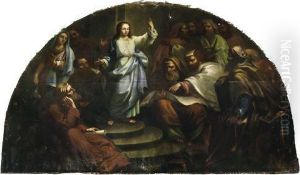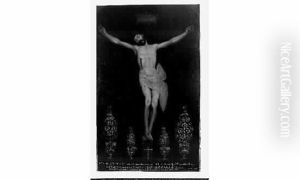Jose De Ibarra Paintings
Jose de Ibarra was a prominent painter during the colonial period in Mexico, born in 1685 in Guadalajara, New Spain (present-day Mexico). He is recognized as one of the leading figures in Mexican Baroque painting, and his work is characterized by religious subjects, as it was typical of the time, often incorporating indigenous elements into his compositions.
Ibarra's training and career took place during a rich period of artistic production in Mexico, known as the Mexican Baroque era, which blended European Baroque sensibilities with New World creativity. He was a disciple of the painter Juan Correa, who was one of the most renowned artists in Mexico at the time. Under Correa's mentorship, Ibarra honed his skills and eventually emerged as a master artist in his own right.
Throughout his career, Ibarra was deeply involved with the artistic and cultural scene in Mexico City. He contributed significantly to the painting of religious iconography in churches and convents. His artwork was not limited to canvas, as he also worked on frescoes and other decorative projects within ecclesiastical contexts.
Ibarra's style evolved over the years, displaying a keen attention to detail and a rich use of color, which was influenced by both European and Mexican traditions. His works often featured dramatic lighting and elaborate compositions. He was also known for his skillful portrayal of fabrics and textures, which gave his paintings a tactile quality.
One of his most significant contributions to Mexican art was his role as a teacher. Ibarra took on many apprentices and was instrumental in the formation of the Academy of Painting in Mexico City, an institution that played a crucial role in the development of Mexican art. Through his teaching and his own practice, he helped to establish a Mexican painting tradition that would influence generations of artists to come.
Jose de Ibarra passed away in 1756 in Mexico City. His legacy lives on through his paintings, which can be found in various churches and museums, and through the lineage of Mexican artists who have been inspired by his work and the artistic standards he set during his career.

